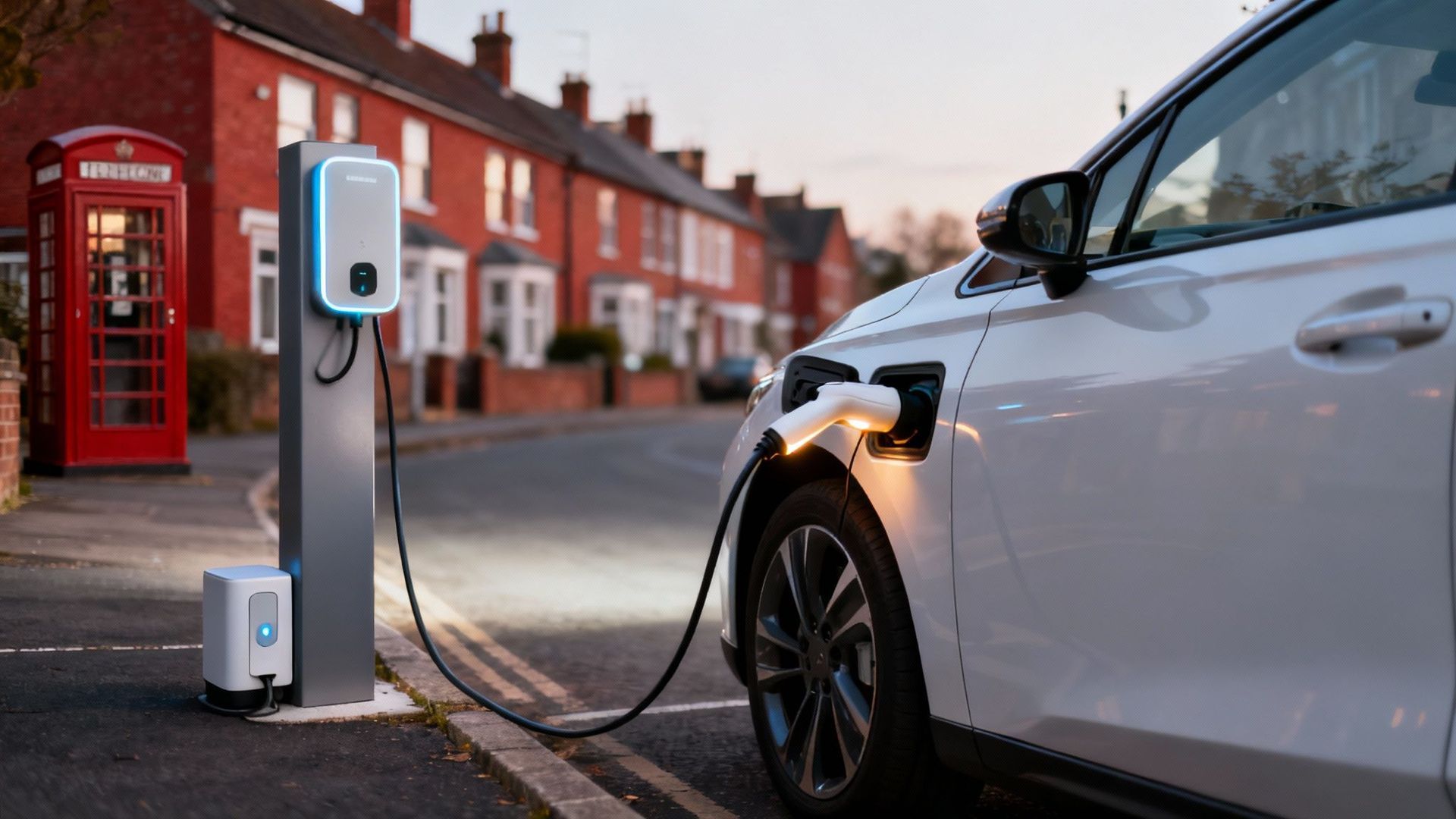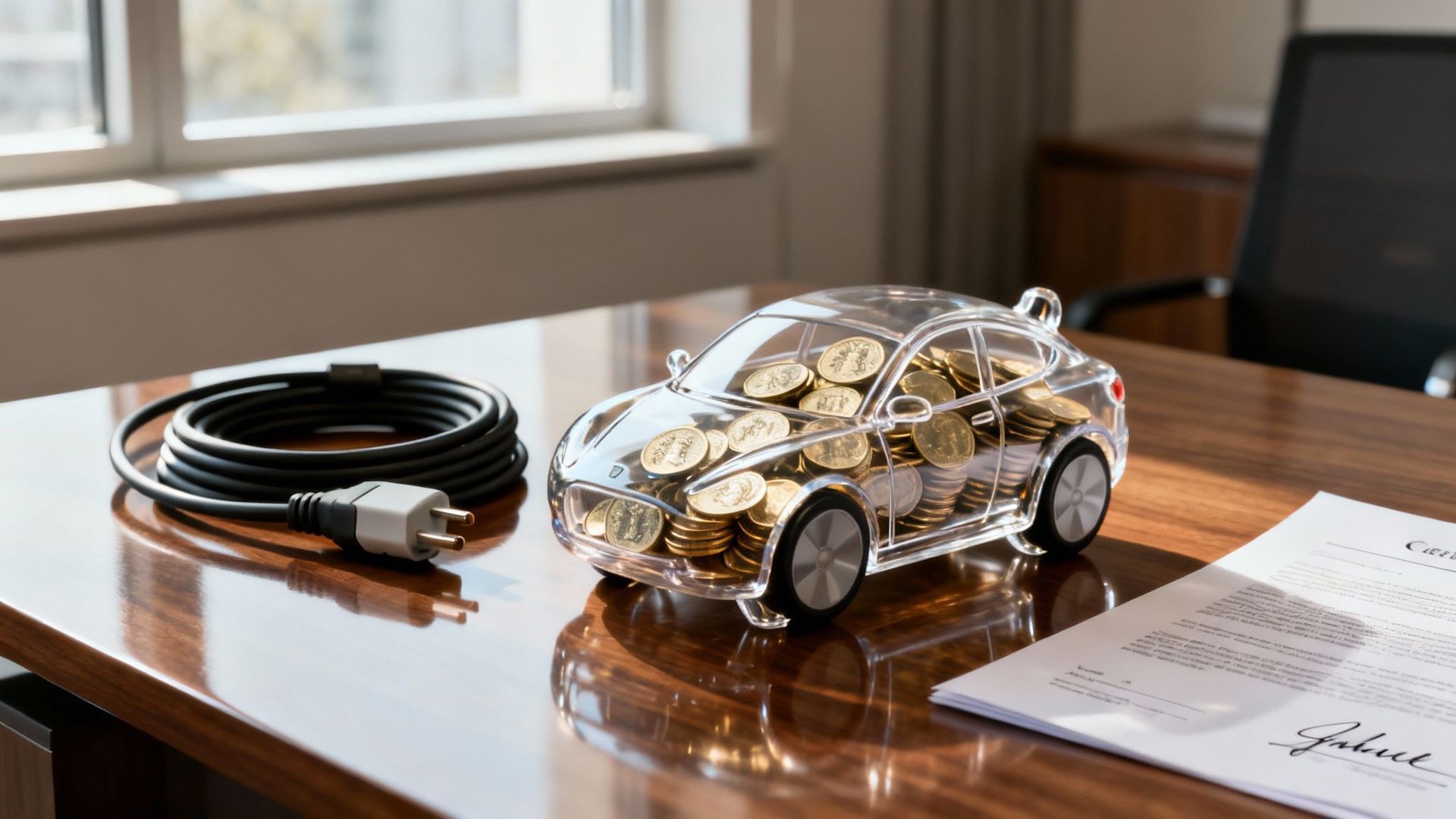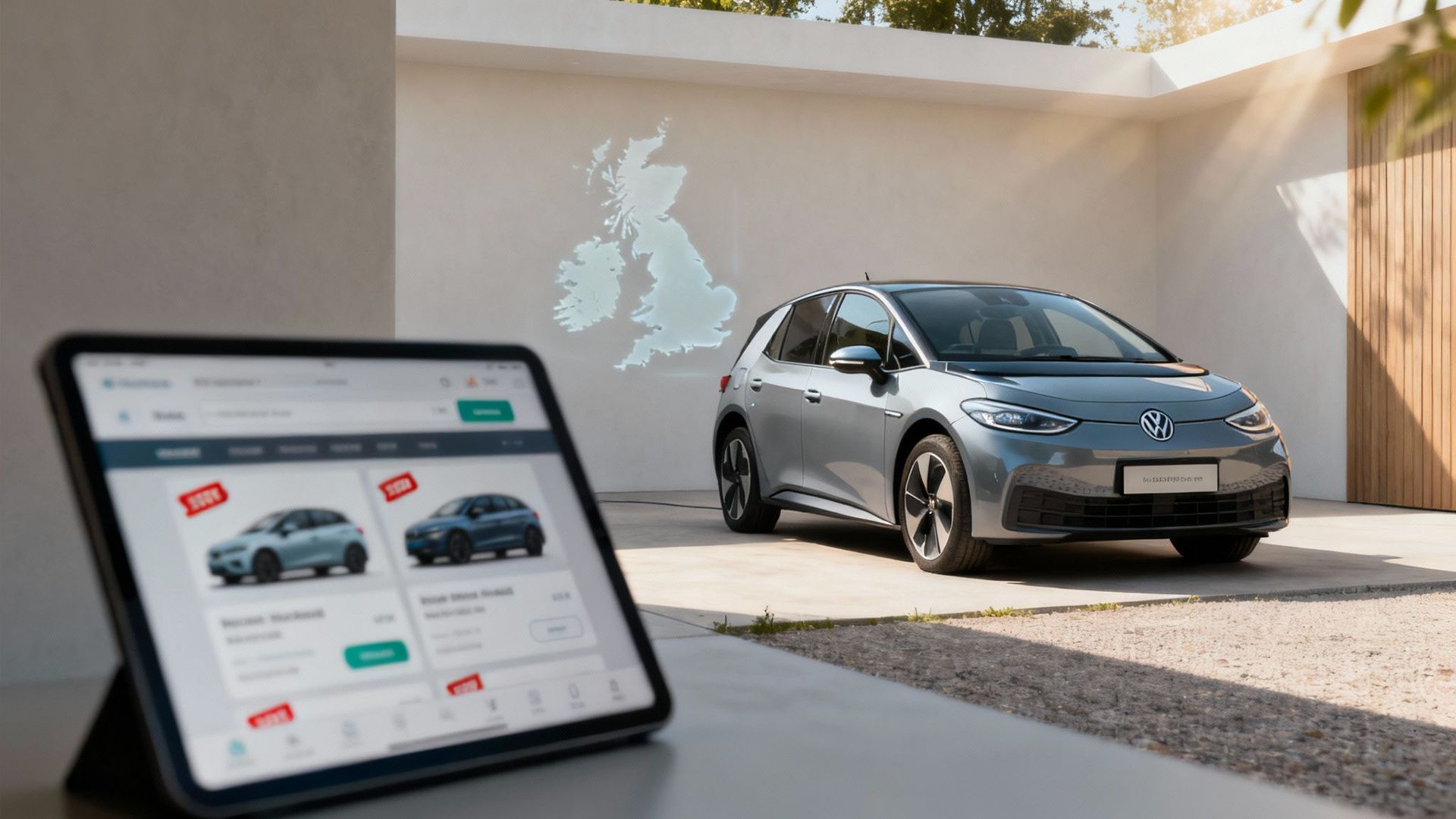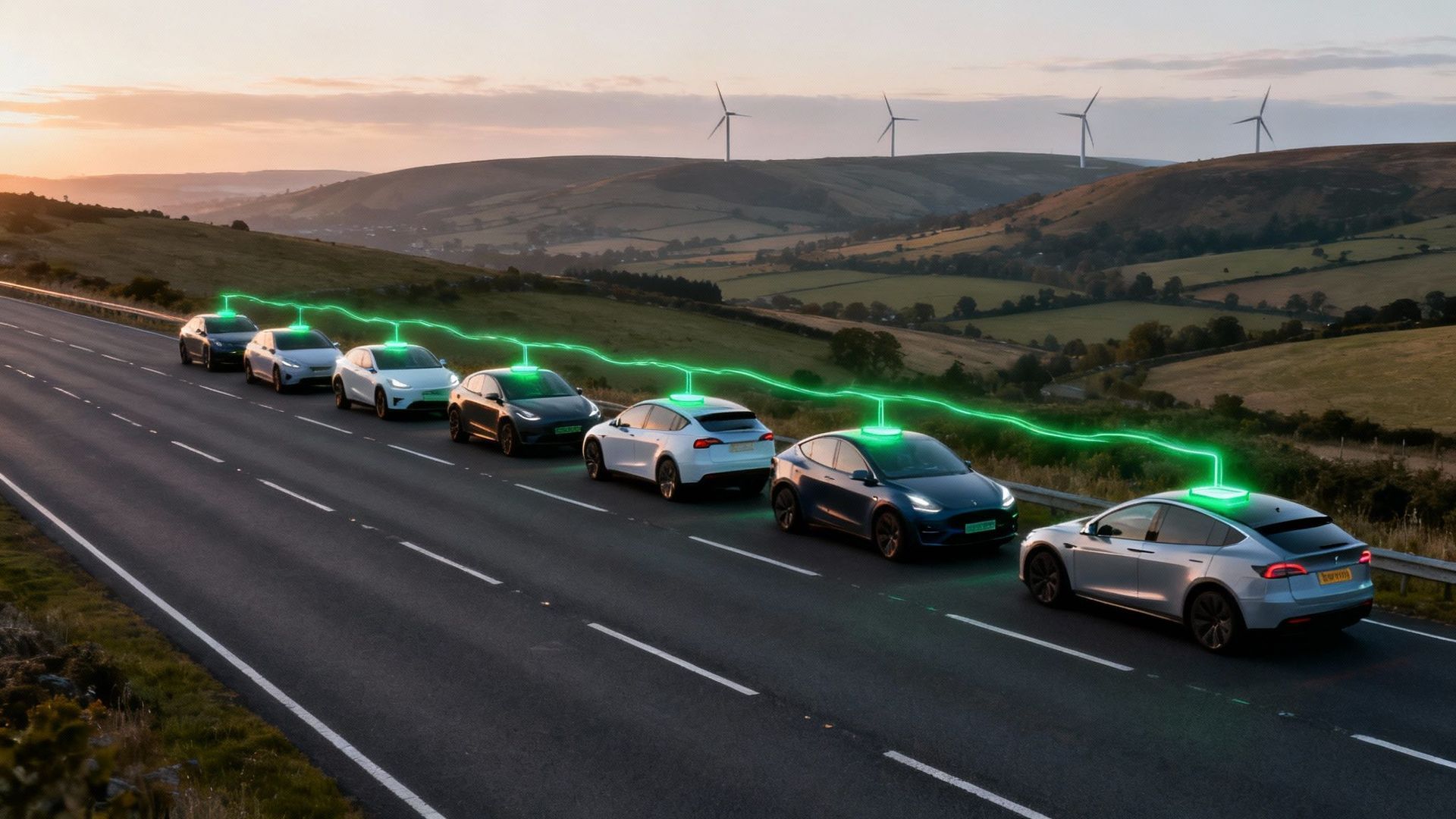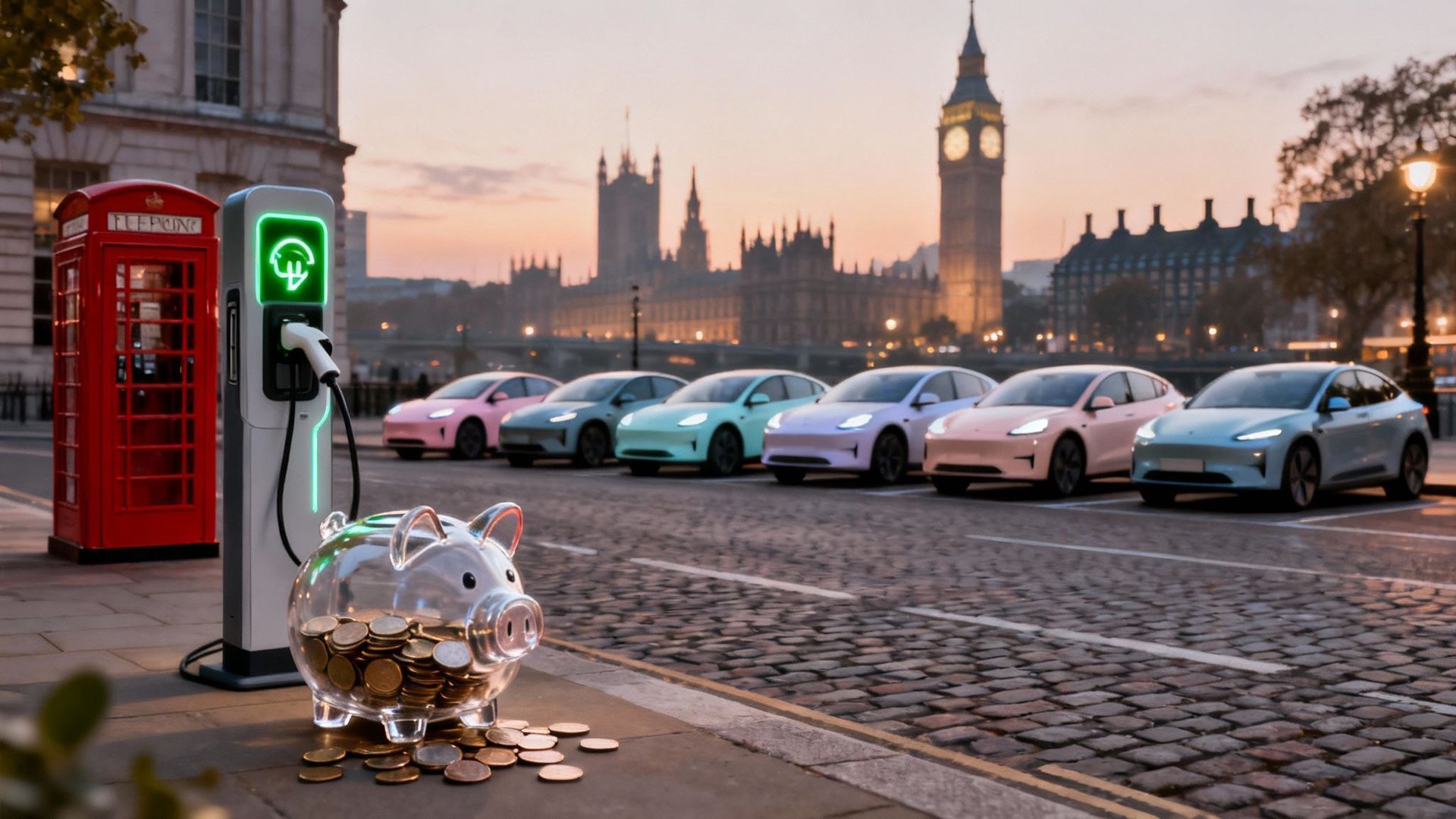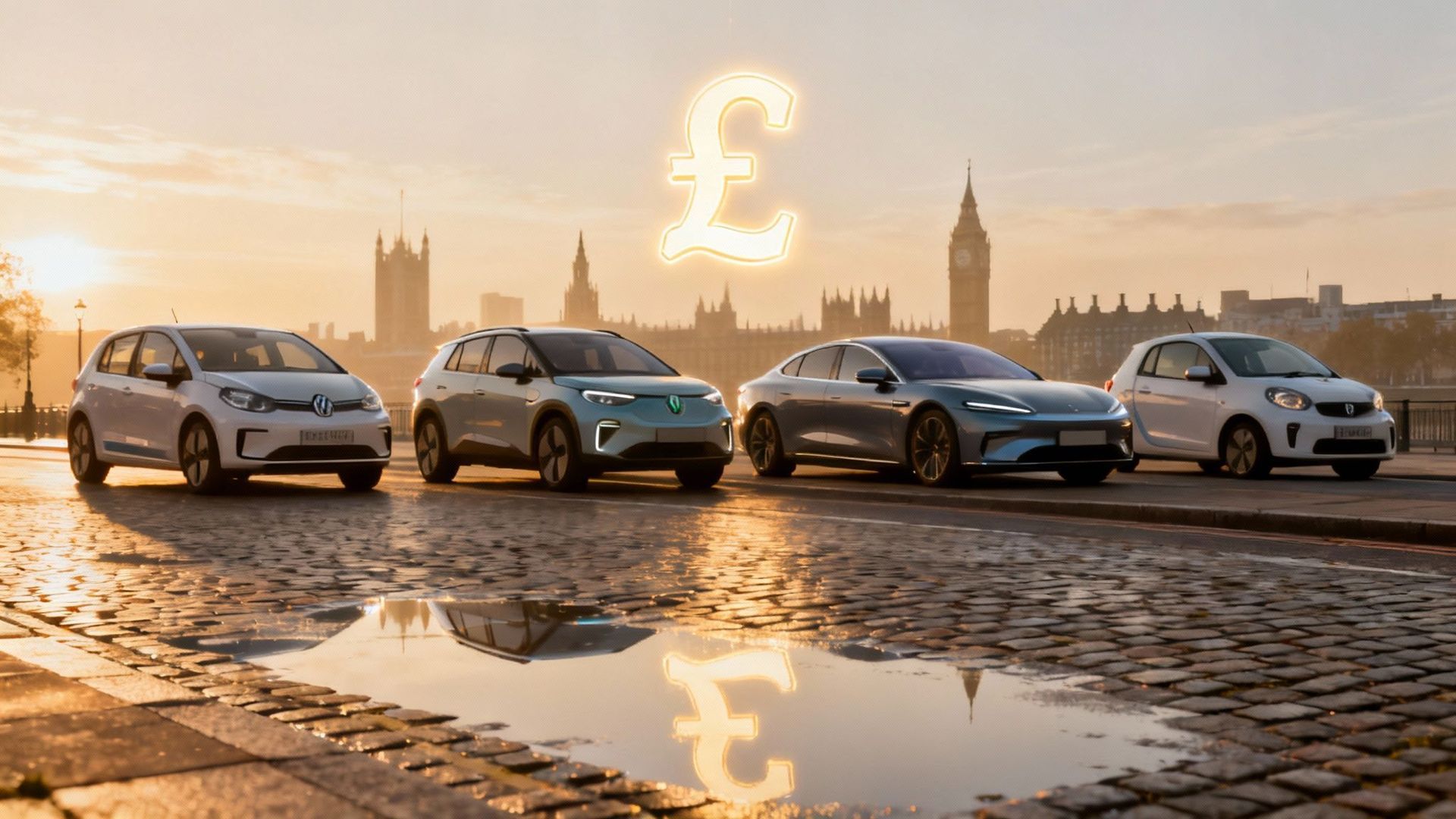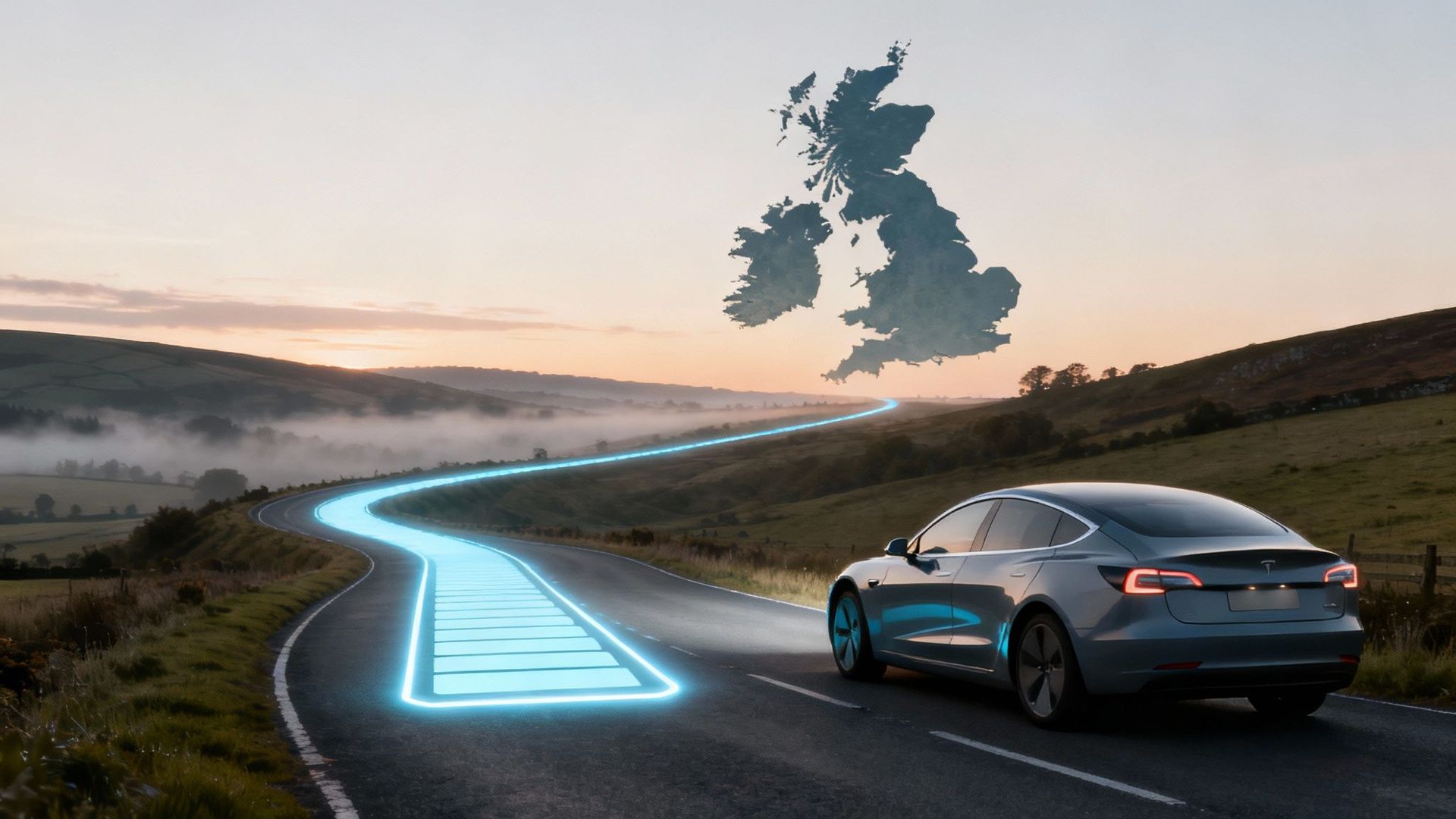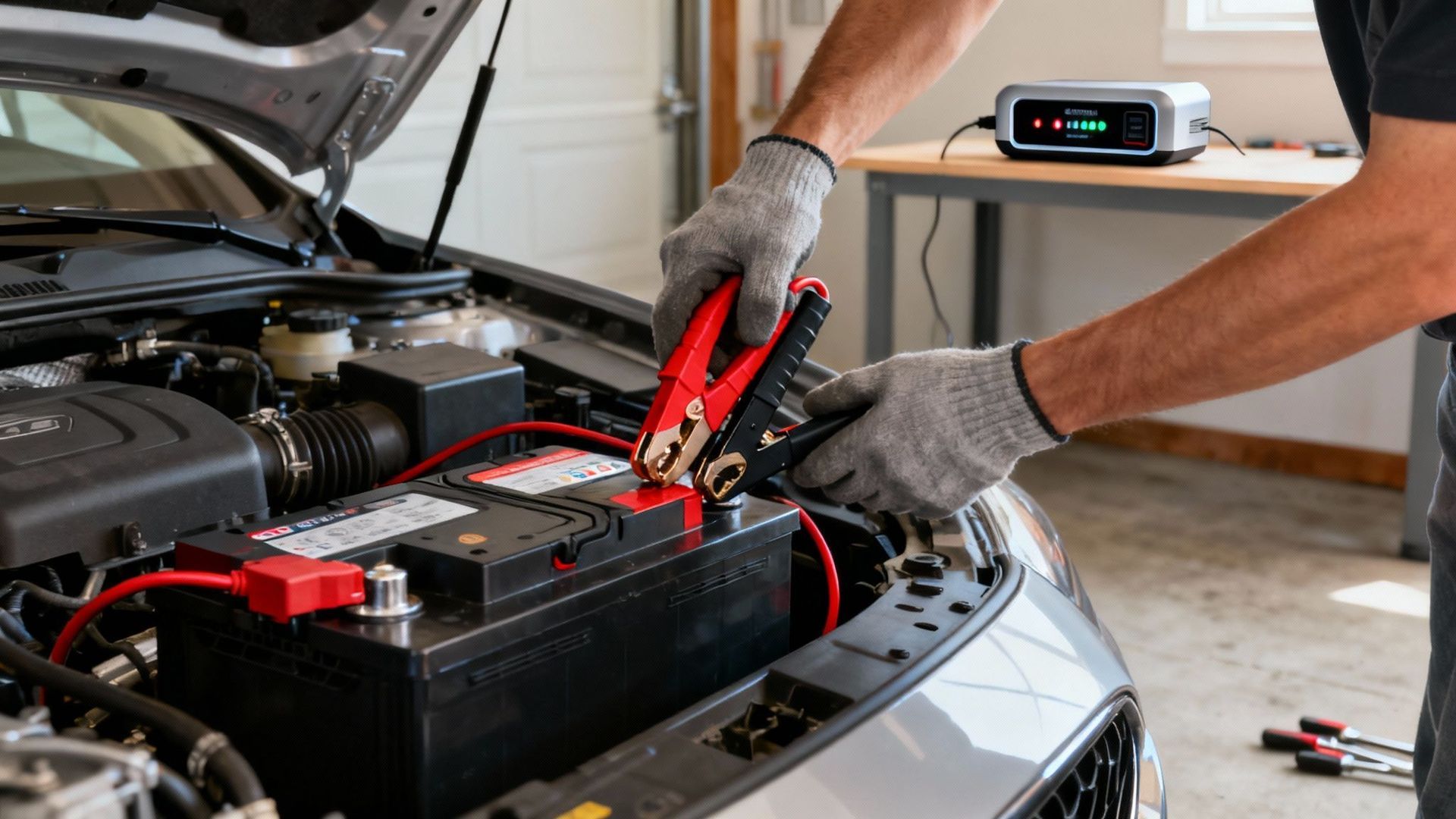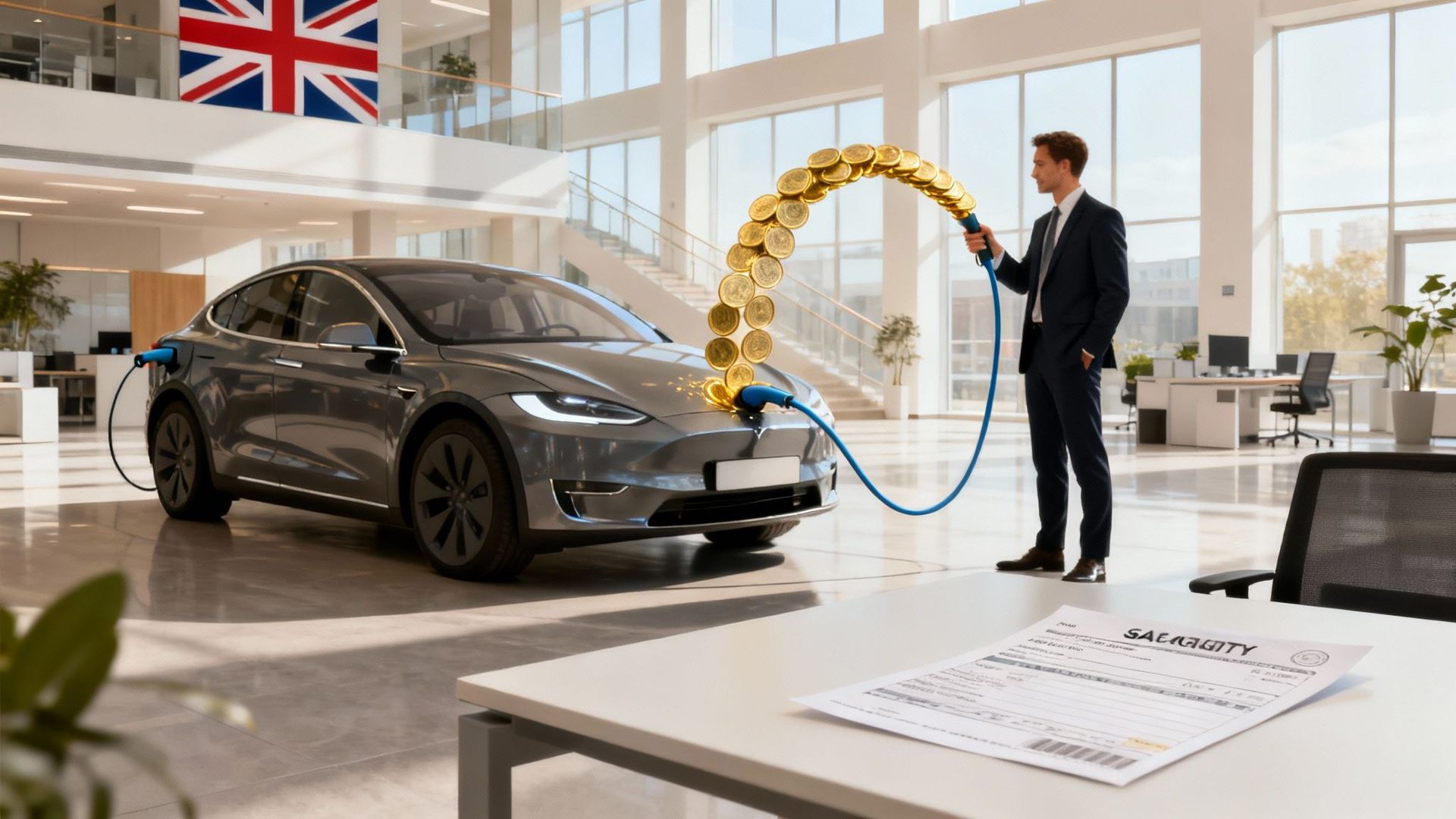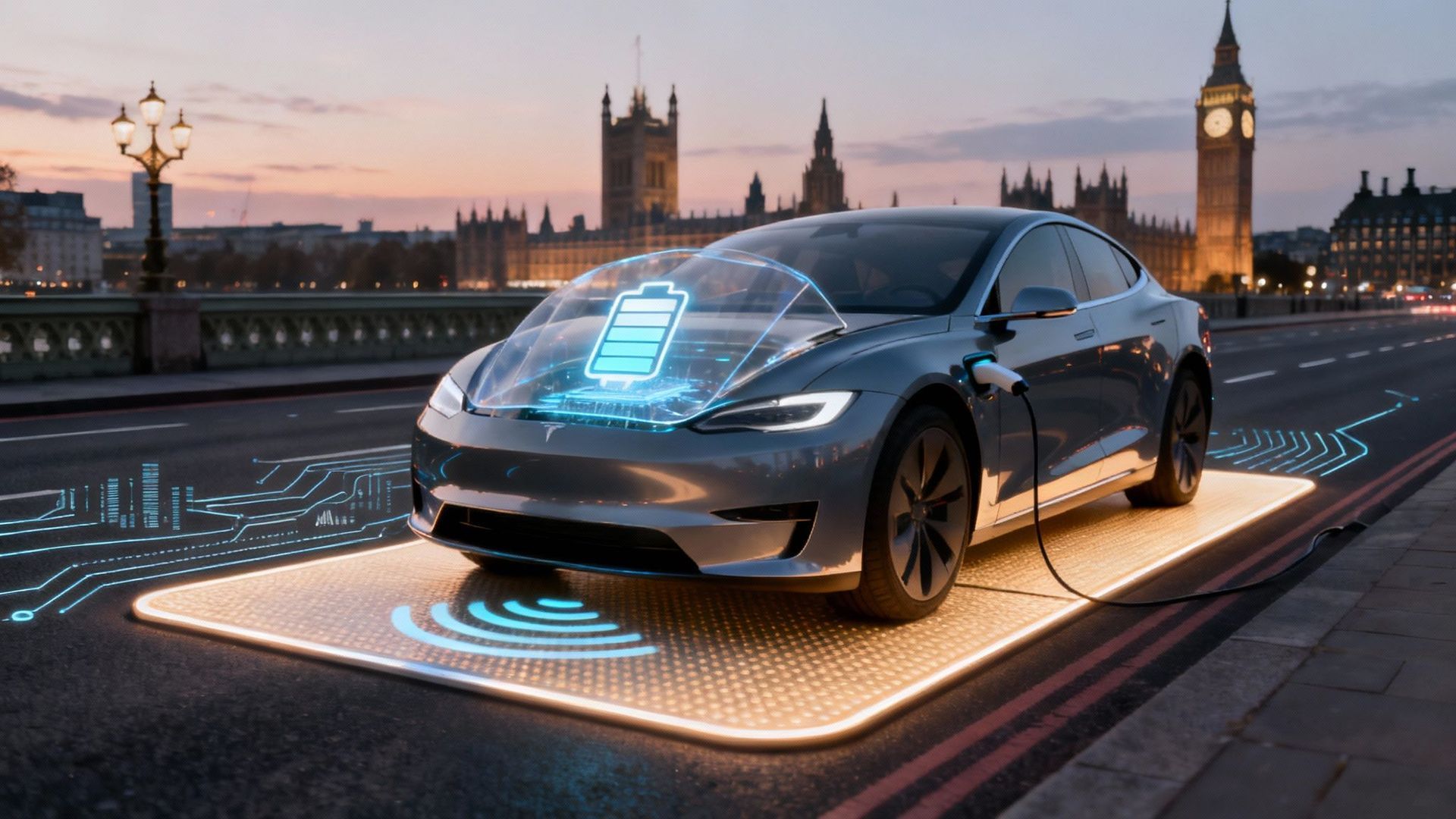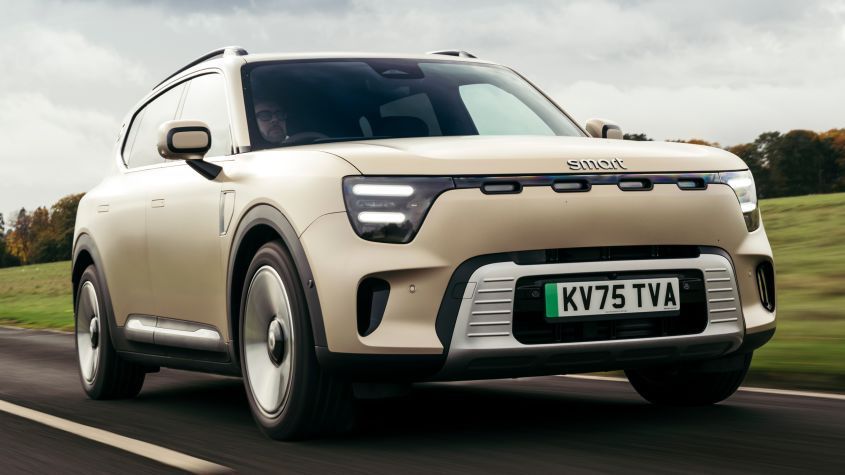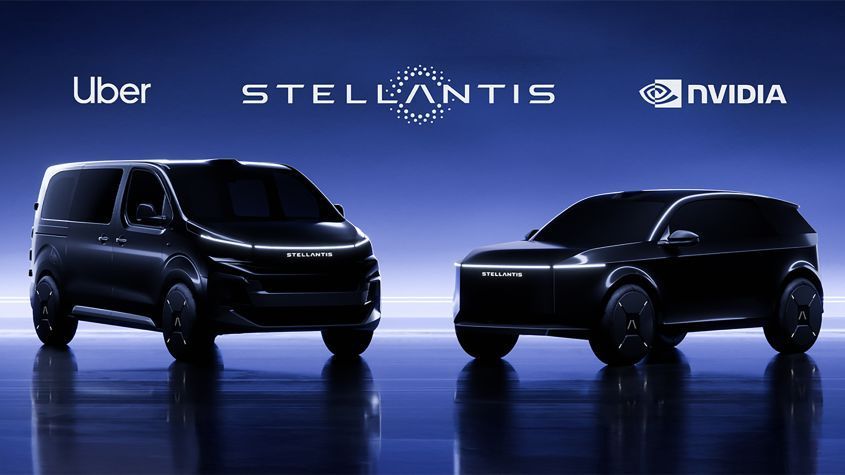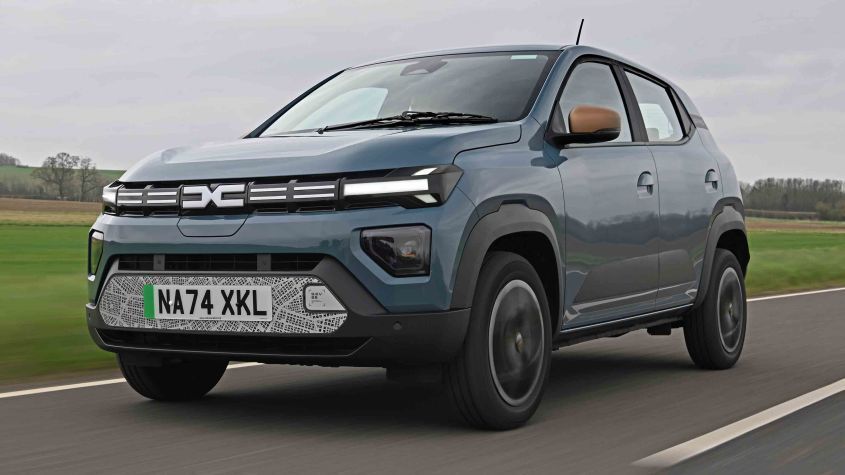Hyundai Kona Electric Range: A Brutally Honest UK Guide
On paper, the official Hyundai Kona Electric range for the 65kWh model is a suspiciously impressive 319 miles . That’s the sort of figure that gets headlines – enough to get you from London to Newcastle with charge to spare for a celebratory Greggs.
But, as any EV driver who's ever trusted the dashboard's Guess-O-Meter will tell you, the number in the brochure and the number you actually get are often two very, very different things.
Decoding The Official Hyundai Kona Electric Range (aka The Big Lie)
Let's get straight to the point about that official range figure. It comes from a standardised test called the Worldwide Harmonised Light Vehicle Test Procedure (WLTP). The best way to think of WLTP is like a car's Tinder profile picture: it's not technically lying, but it was taken in perfect lighting, from the best possible angle, with a filter that could hide a multitude of sins.
The test happens in a lab, not on a wet Tuesday on the M25. The temperature is a balmy 23°C, there’s no headwind, and no need to blast the heater because your breath has just fogged up the windscreen. The driving cycle is gentle and predictable, a world away from the reality of British A-roads, motorway sprints, and the soul-crushing despair of stop-start city traffic.
It’s a great tool for comparing different EVs side-by-side, but it’s not a promise of what you’ll get day-to-day. You can dive deeper into this festival of fibs in our full electric car range comparison for the UK.
Kona Electric Range: The Brochure vs. Blighty's Grim Reality
So, what does this all mean when you're actually driving a Kona Electric on UK roads? The difference between the lab-tested fantasy and real-world mileage can be significant, especially when the British weather decides to do its thing.
Cold weather is the biggest enemy of an EV battery. It slows down the chemical reactions needed to release energy, which means you get fewer miles from a full charge. It’s like trying to get out of bed on a dark January morning – everything is just sluggish and unwilling. The table below lays out what you can realistically expect.
| Battery Size | Official WLTP Range (The Dream) | Typical Summer Range (The Reality) | Typical Winter Range (The Grim Reality) |
|---|---|---|---|
| 65kWh | 319 miles | ~260 miles | ~210 miles |
As you can see, that headline figure takes a serious kicking in the colder months. Don't be alarmed; this is normal for all electric cars, not just the Kona. They all hate the cold.
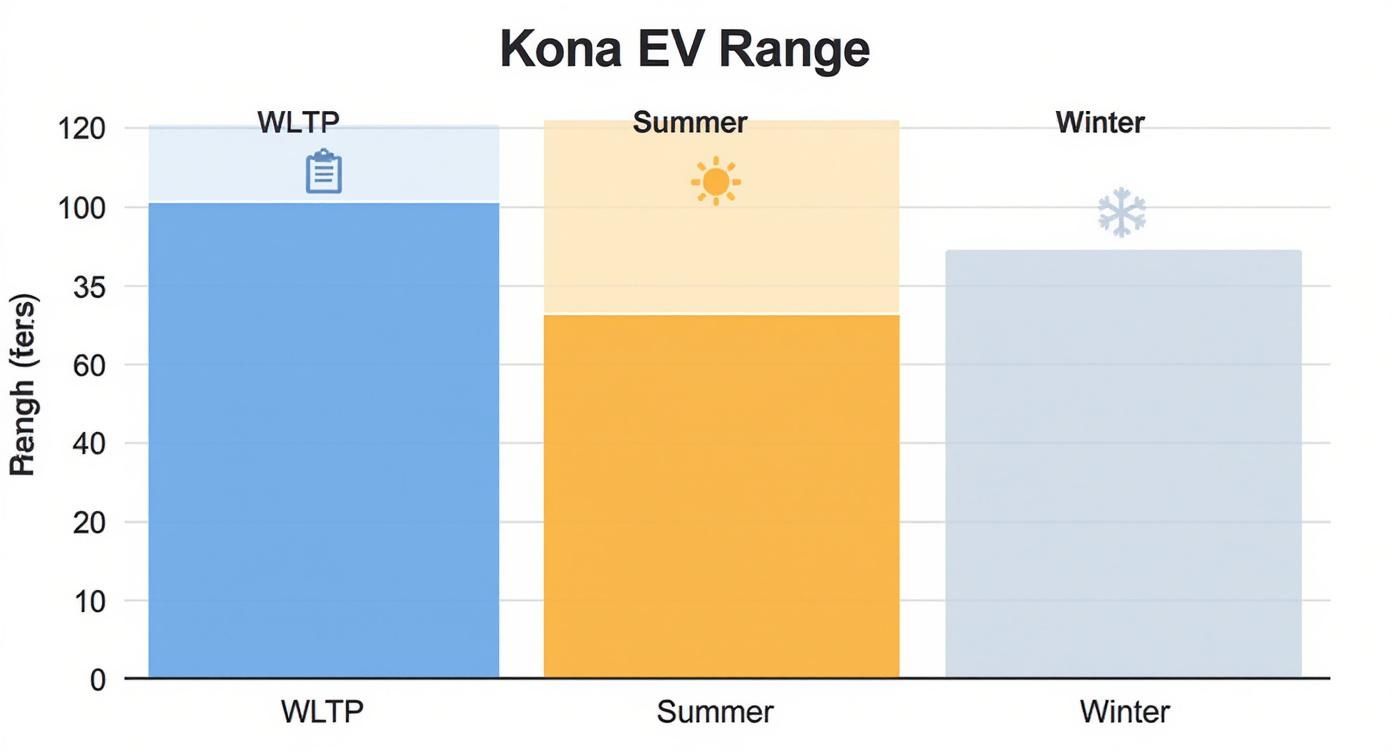
This infographic really drives the point home. That drop-off in winter is something every potential UK buyer needs to factor into their decision. It’s crucial for planning those longer journeys or just understanding your daily commuting capacity when it's freezing outside.
Even with the winter dip, the Kona Electric's real-world performance is still bloody good for its class, which is a big part of why it's become so popular here in the UK.
Think of the official range as a best-case scenario. Your actual, usable Hyundai Kona Electric range will always be a moving target, influenced by the season, your driving style, and how much you enjoy a warm cabin on a frosty morning.
The Real-World Factors That Mug Your Miles
So, we've established that the official Hyundai Kona Electric range is more of a wildly optimistic fantasy. Now, let’s get into the nitty-gritty of what actually drains your battery on a typical British day. Think of these as the culprits that turn a healthy range estimate into a frantic search for the nearest charging point.
The number one enemy of any EV battery is the weather. Your Kona’s lithium-ion battery is a bit like a person – it has a preferred temperature range where it feels most comfortable and works most efficiently. When the temperature plummets, particularly during a cold snap, the chemical reactions inside the battery slow right down, making it much harder to deliver power. That sluggishness means fewer miles on the road.
But the cold hits you with a double whammy. It's not just the battery that's less efficient; you're also demanding more from it. Cranking up the heater, switching on the demister, and enjoying those toasty heated seats all draw a significant amount of power directly from the main battery. Unlike a petrol car that cleverly uses waste heat from the engine, an EV has to generate that warmth from scratch.
A study by the American Automobile Association found that at -6.7°C (20°F), the average EV range drops by a staggering 41% when the cabin heater is running. That’s a massive slice of your range gone before you’ve even left the driveway.
How You Drive Makes All the Difference
After the weather, the next biggest influence on your range is, well, you. Your driving style has a huge impact on the Hyundai Kona Electric range . Stamping on the accelerator is the EV equivalent of sprinting everywhere; you’ll get there quickly, but your energy will be completely sapped.
The key is smooth, gentle acceleration and looking far ahead down the road. Every time you slam on the brakes, you're wasting precious momentum. That momentum could have been captured and sent back to the battery as a little top-up through regenerative braking.
Here’s a breakdown of how different driving habits can eat into your mileage:
- Motorway Speeds: The difference between cruising at 60 mph and pushing it to 70 mph is significant. Overcoming the extra air resistance at higher speeds requires a lot more energy and can easily shave 20-25% off your range on a long journey.
- Extra Weight: It all comes down to basic physics. The heavier your car, the more energy it needs to get moving. A Kona loaded up with four passengers and a boot full of luggage will have a noticeably shorter range than one with just the driver.
- Aerodynamic Drag: That roof box you've attached for the family holiday might be practical, but it's also like strapping a small parachute to your car. It disrupts the Kona's smooth airflow, increasing drag and making the motor work harder. You can easily lose 10-15% of your range this way.
It helps to think of your available range not as a fixed number, but as a flexible budget. Every choice you make behind the wheel—from the temperature you set to how you approach a junction—is either a saving or a withdrawal. Drive thoughtfully, and you’ll find that budget stretches a lot further than you might think.
What Real UK Drivers Get From The Kona Electric
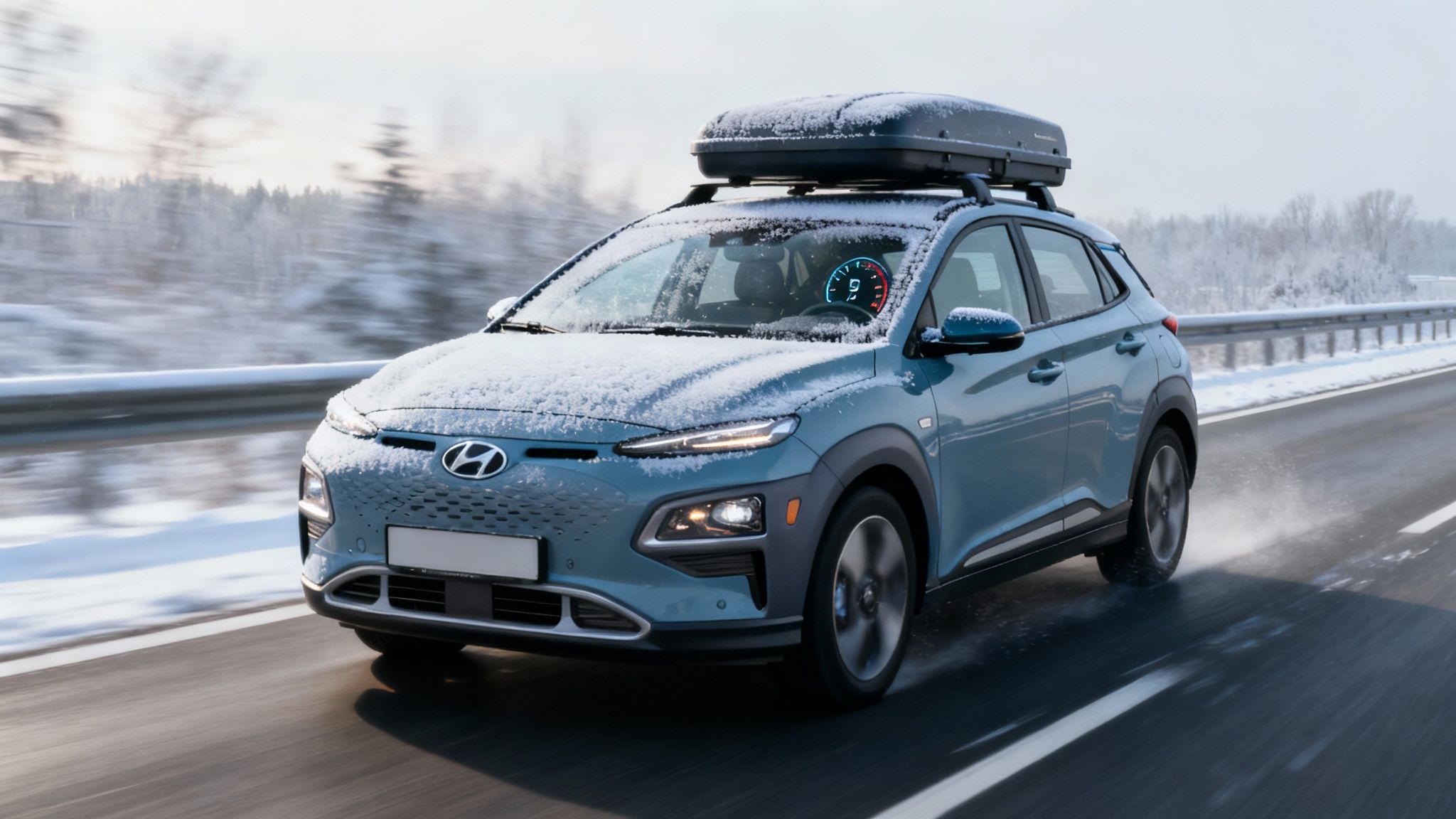
Right, enough with the lab coats and spreadsheets. Let's talk about what the Hyundai Kona Electric range looks like when it meets the M6 on a drizzly Tuesday morning or gets stuck in London traffic. This is where the rubber actually meets the road, and thankfully, the Kona Electric holds up impressively well.
If you spend a bit of time on owner forums and Facebook groups, a clear picture starts to form. The Kona Electric is a bit of a star around town. The constant stopping and starting is where its regenerative braking system really gets to shine, feeding a trickle of power back into the battery with every lift of the accelerator. Many city-based drivers report efficiency figures that are genuinely impressive, often getting close to, or even beating, the official numbers in gentle, low-speed driving.
For the daily school run or a commute across the city, this means the range gauge barely seems to budge. The Kona feels perfectly at home in the concrete jungle, making it a cracking choice for urbanites.
Motorway Miles And A-Road Adventures
Naturally, things change once you get it onto a fast-flowing motorway. As we’ve touched on, high, constant speeds are the enemy of EV efficiency. A long slog from London to Leeds will see the range drop more quickly, especially if you’re sitting at a steady 70 mph . Most owners of the 65kWh model report a realistic motorway range of around 220-240 miles in decent weather. That’s still more than enough for most long journeys, with just a single, well-timed coffee break needed.
It's on winding A-roads and B-roads where the Kona finds its sweet spot. The mix of cruising, slowing down for villages, and braking for junctions allows the regenerative systems to do their thing, and drivers often find the car's real-world performance here to be reassuringly solid.
The general consensus is clear: the Kona Electric might not always hit its headline figure, but its real-world performance is consistent and dependable. It offers a usable range that comfortably handles the vast majority of UK journeys without inducing panic.
The Kona Electric’s real-world range aligns well with what UK drivers actually need for their daily and weekend trips, which helps explain its popularity. This was certainly helped along by previous government incentives which boosted EV adoption across the country. You can read more about Hyundai sales performance in the UK.
Translating Miles into Money
Let's put this into pounds and pence. The key metric for any EV is its efficiency, usually measured in miles per kilowatt-hour (kWh). Most Kona drivers report seeing between 3.5 and 4.5 miles per kWh , depending on the conditions.
What does that mean for your wallet? Let’s take a look.
- At an average home electricity rate of 28p per kWh , a typical 20-mile commute would cost you roughly £1.40 .
- If you can switch to a cheap overnight tariff like Octopus Go at 7.5p per kWh , that same commute costs a paltry 38p .
When you compare that to a petrol car doing the same journey, the savings become glaringly obvious. The Hyundai Kona Electric range isn't just about distance; it's about making each of those miles incredibly cheap.
How To Squeeze Every Last Mile From Your Kona
So, you’ve seen how a heavy right foot and a cold winter morning can conspire against your battery. But don’t worry, it’s time to fight back. Think of these tips as your masterclass in becoming a true range-ninja, stretching every last kilowatt until it squeaks.
First up, you need to get your head around regenerative braking . Forget the complicated science; just think of it as free energy. Every time you lift off the accelerator, the electric motor flips into reverse, slowing the car down and trickling a little bit of power back into the battery.
The Kona brilliantly gives you control over this with paddles behind the steering wheel. For driving around town, crank it up to the max for ‘one-pedal driving’. You’ll find you barely need to touch the actual brake pedal, capturing energy every time you slow for traffic or a junction. It's surprisingly addictive.
Become The Master Of Your Driving Domain
Next, learn to love ‘Eco’ mode. Yes, it dials back the throttle response and makes the Kona feel a little more relaxed—some might say lethargic. But what it’s really doing is smoothing out your power use and running the climate control more efficiently. It’s the sensible jumper your mum would approve of: not particularly thrilling, but incredibly effective at getting the job done.
A couple of pre-drive habits can make a huge difference, too. Use the pre-conditioning feature to warm or cool the cabin while you’re still plugged in at home. This simple step uses mains electricity, not precious battery power, to get the car comfortable before you set off. Having a reliable home setup is key, which you can read all about in our guide to the best home EV chargers UK drivers recommend.
The Little Things That Add Up
Don't ignore the small, seemingly insignificant details. These are the easy wins that, when stacked together, can add a surprising number of miles back to your range estimate.
- Tyre Pressures: Under-inflated tyres are your enemy. They create more drag, making the motor work harder for every single mile. Check them once a month – it's one of the simplest efficiency boosts you can make.
- Lose The Drag: That roof box or bike carrier might look adventurous, but it wrecks the car’s aerodynamics. If it's not in use, take it off. On a long motorway journey, you could claw back 5-10% of your range.
- Plan Your Route: A slightly longer but flatter route is often more efficient than a shorter, hillier one. Steep climbs absolutely devour battery charge. Many modern sat-nav apps can help you plan for efficiency.
Stop thinking of your range as a fixed number. See it as a flexible resource that you control directly. Every smooth acceleration and every time you anticipate traffic to avoid braking is like putting miles back in the bank. Drive smart, and the Hyundai Kona Electric range becomes something you manage, not something you worry about.
How The Kona Electric Stacks Up Against Its Rivals
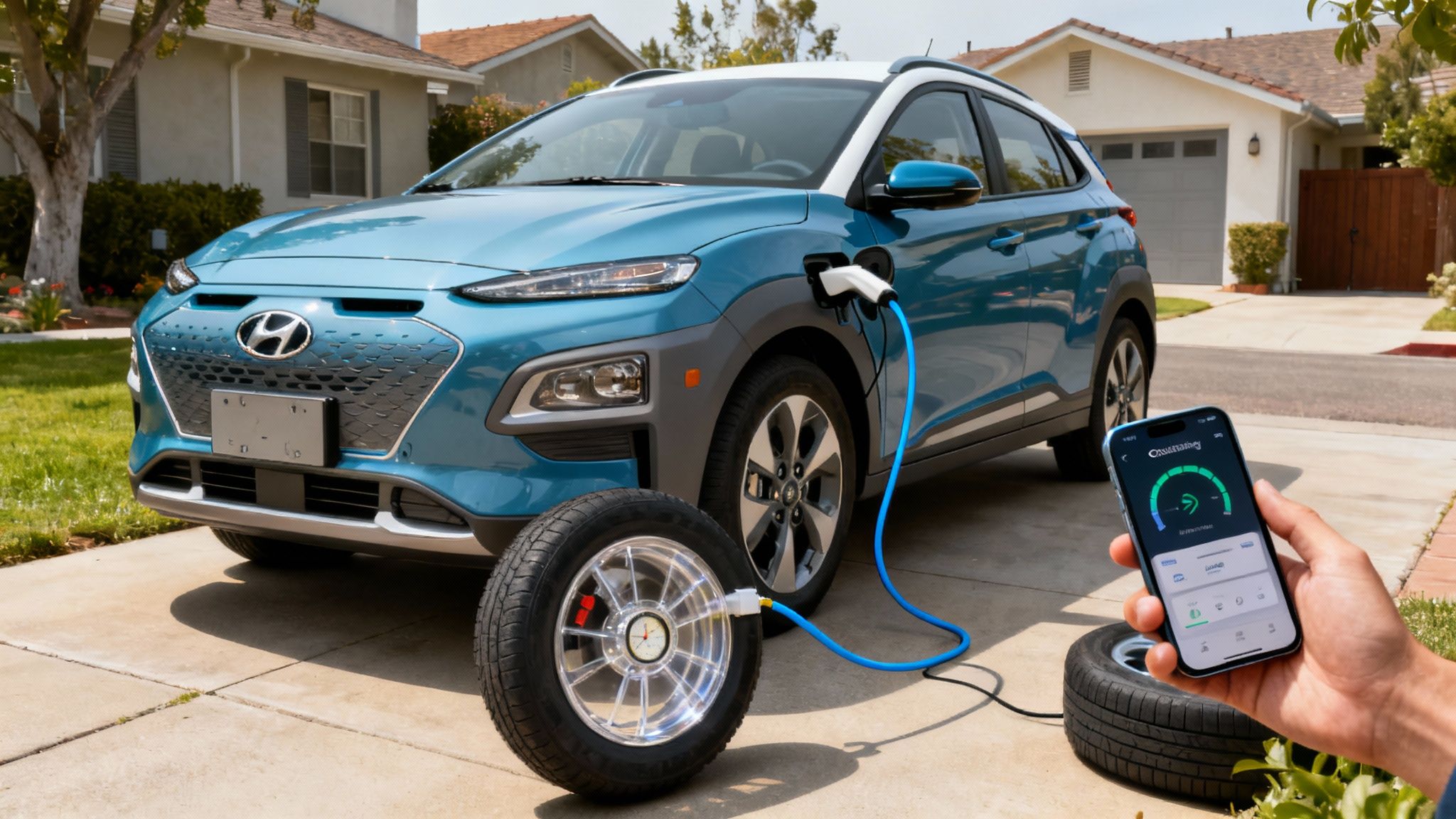
No car exists in a vacuum, and that’s especially true in the fiercely competitive world of electric crossovers. The Kona Electric has a lot going for it, but how does its real-world range and overall package truly fare when you put it head-to-head with its biggest competitors?
The most obvious family feud is with its corporate cousin, the Kia Niro EV . For years, these two have been practically joined at the hip, sharing much of the same excellent battery and motor tech. The Niro often wins on practicality with its slightly more spacious, estate-like boot, but the Kona has always fought back with a funkier design and, in its latest generation, a much more modern interior.
But there's another player that's been shaking things up: the MG4 . It completely crashed the party by offering a compelling mix of a sharp price tag, decent range, and a surprisingly fun rear-wheel-drive setup. For many buyers, it’s become the default budget-friendly choice.
The Electric Face-Off: Kona vs The Contenders
Let's cut to the chase and look at the numbers that really matter on UK roads. Official figures are one thing, but how a car performs in the real world—especially its charging speed on a long motorway slog—is where the real battles are won and lost.
This is an area where the Kona Electric has always performed well. While some rivals might boast a slightly higher peak charging speed on paper, the Kona is known for holding a strong, consistent charging curve. This often means it can add more miles of range in a typical 20-30 minute stop at a rapid charger than some competitors whose speeds drop off more quickly.
Here’s a quick rundown of how the long-range models compare.
| Model | Price (Approx.) | WLTP Range | Real-World Winter Est. | Max Charging Speed |
|---|---|---|---|---|
| Hyundai Kona Electric (65kWh) | £38,595 | 319 miles | ~210 miles | ~102kW |
| Kia Niro EV '3' (64.8kWh) | £37,295 | 285 miles | ~195 miles | ~80kW |
| MG4 Trophy LR (64kWh) | £32,495 | 270 miles | ~190 miles | ~135kW |
What does this all mean? The MG4 offers incredible value for money and boasts the fastest peak charging speed. However, the Kona Electric pulls ahead with a superior official and real-world range, which makes it a more reassuring choice if you suffer from serious range anxiety. The Niro EV is still a solid, practical car, but its slightly shorter range and slower charging could be the deciding factor for drivers who frequently travel long distances.
A Buyer's Guide to the Used Hyundai Kona Electric
Grabbing a nearly new electric car is a savvy move, letting you sidestep the biggest chunk of depreciation, and the Kona Electric is a cracking choice. It's a popular car on the second-hand market, which is great for buyers, but it also means you need to know what you’re looking for to sort the good from the bad.
The single most critical check is the battery’s State of Health (SOH) . Think of it like the health bar on a video game character – a new car starts at 100% , but this figure naturally decreases over its life. A higher SOH means more potential range, so you want that number as close to 100% as possible. A car that's been thrashed on rapid chargers day in, day out might show more wear, so it pays to be cautious.
What To Look For
Beyond the battery, it's time to do some proper homework. Get to know the different trim levels – SE, Premium, and the top-spec Ultimate – to make sure the car you’re eyeing up actually has the kit you want. A full, documented service history isn't just a 'nice to have'; it's non-negotiable. This confirms the car has been mechanically looked after and, just as importantly, has received any crucial battery-related software updates.
Here’s a quick checklist to run through before you even think about a test drive:
- Battery SOH: Insist on seeing a recent report from the dealer. If they’re cagey or can’t provide one, that's a massive red flag. Walk away.
- Charging History: Ask how the car has been charged. A history of gentle home AC charging is the dream scenario.
- Service History: Look for a stamped book or digital record, ideally from a main dealer, to ensure that long warranty is still valid.
- Tyres: Check the rubber. Premium, EV-specific tyres are a good sign of a careful owner. Budget tyres could suggest corners have been cut elsewhere.
Buying a used EV isn’t something to be scared of, but it does require a slightly different approach to a petrol or diesel car. The battery is the heart of the vehicle, and its health is everything. You can dive deeper into this topic in our guide on the truth about battery health reports on used EVs.
The Kona Electric has built a solid reputation for being a reliable all-rounder, making it a firm favourite on the UK used market. Find a well-looked-after example, and you'll get fantastic real-world range for a serious discount on the new price.
Your Kona Electric Range Questions Answered
We’ve gone deep on the numbers, but a few common questions always seem to pop up. Let's tackle those lingering thoughts and put your mind at ease.
Does The Kona Electric's Range Decrease Over Time?
In a word, yes. But don't panic. Like the battery in your phone, all EV batteries lose a tiny bit of their capacity over time. This process, known as degradation, is incredibly slow with modern electric cars.
Hyundai provides a solid battery warranty, typically for 8 years or 100,000 miles , which shows their confidence in the technology. A five-year-old Kona that's been looked after should still deliver nearly all of its original range. If you're buying used, just make sure to ask for the battery's State of Health (SOH) report for total transparency.
Is The Bigger Battery Always The Better Choice?
It’s tempting to go for the biggest number on the spec sheet, but it's not always the smartest move. Take a moment to think honestly about how you actually use your car.
If your driving is mostly school runs, trips to the supermarket, and you can plug in at home, the smaller battery version is more than enough. It'll do the job perfectly and save you money. The larger 65kWh battery really only makes sense if you’re frequently pounding the motorways or simply can't shake that feeling of range anxiety. Why pay thousands more for range you'll never use?
Your real-world needs should dictate the battery size you choose. The standard range could be all the Hyundai Kona Electric range you'll ever practically use, saving you a tidy sum.
How Much Does It Cost To Fill Up The Kona Electric?
This is the million-dollar question, and the answer completely depends on where you plug in. Relying on public rapid chargers can get expensive, but the real magic happens when you charge at home.
On a typical home electricity tariff, a full charge of the larger battery might set you back about £18-£20 . However, if you switch to a dedicated overnight EV tariff, where electricity is much cheaper after midnight, that same "fill-up" could cost as little as £5 . Getting your home energy set-up right is the key to unlocking the massive running-cost savings of an EV.
At VoltsMonster , we're all about giving you the straight-talking advice you need to navigate the world of electric cars. For more honest reviews and guides, check out our latest articles at https://www.voltsmonster.com.

